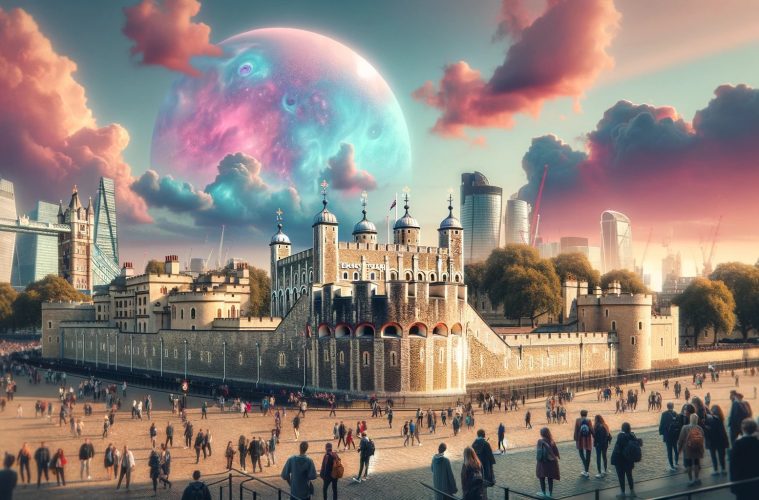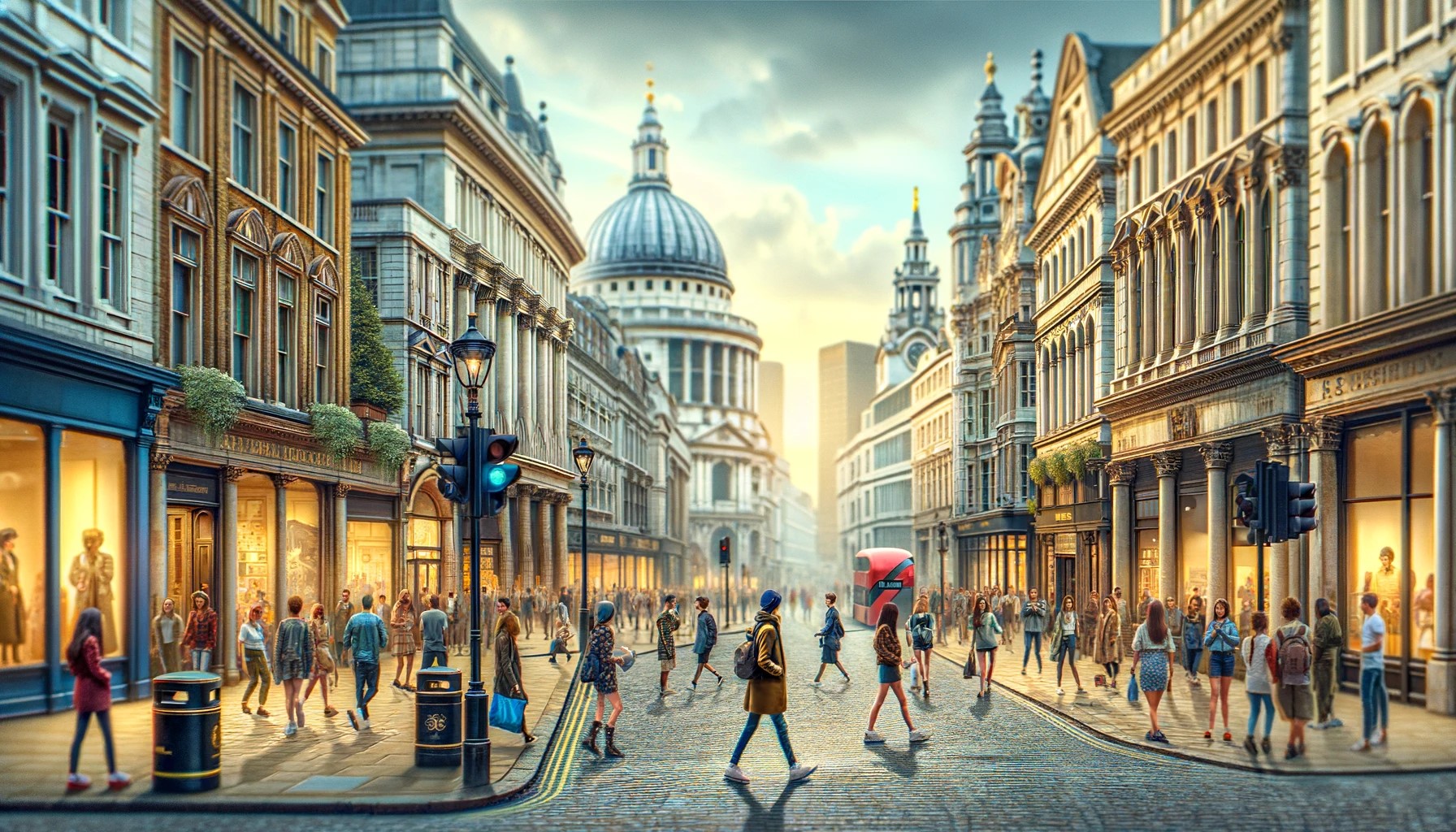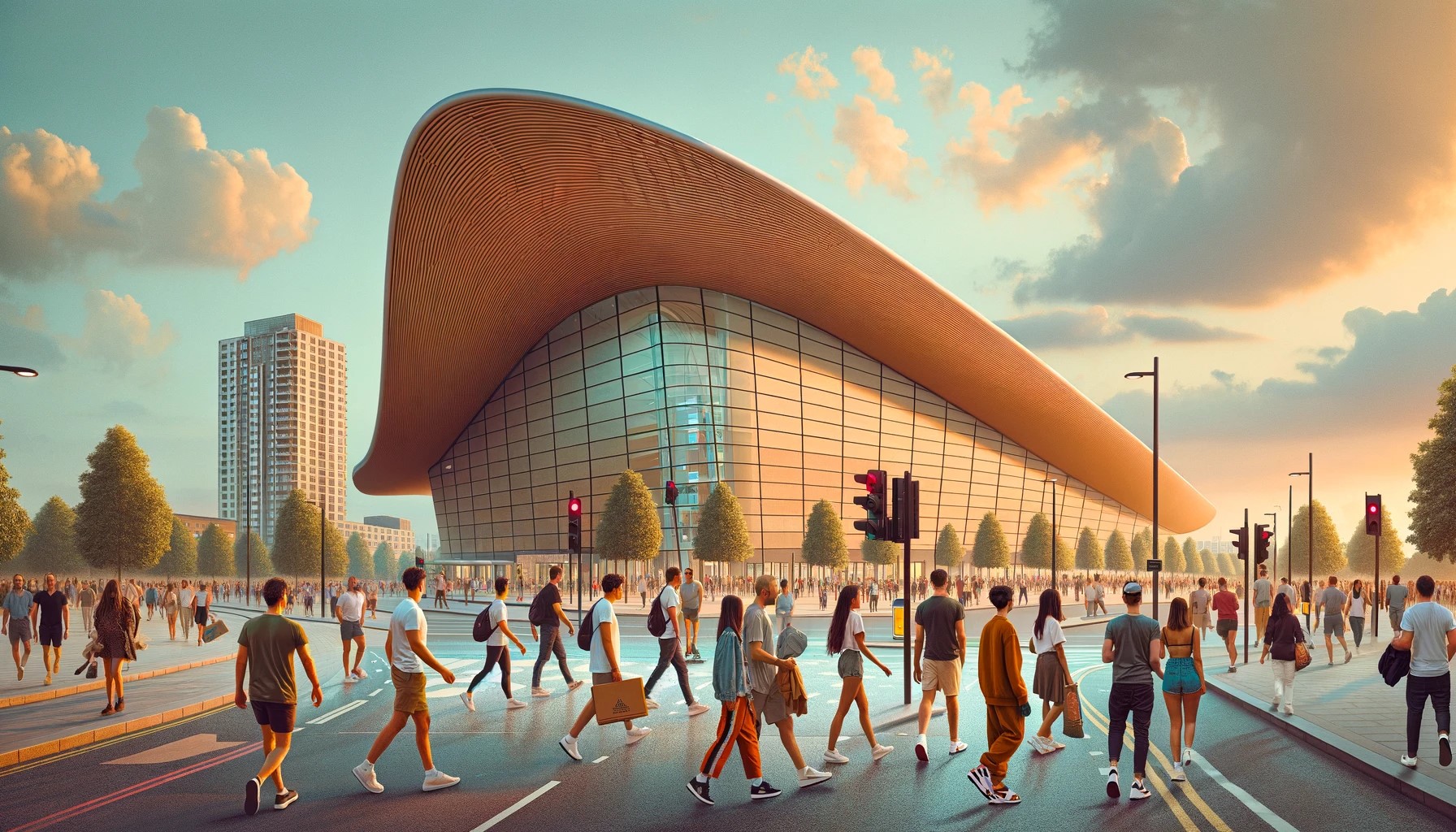Exploring the Icons of Innovation: An Introduction to London Architectural Tours
London stands as a city where history and modernity not only coexist but thrive together, creating a skyline that’s as diverse as it is iconic. The unique blend of architectural styles—from the historic grandeur of the Tower of London to the cutting-edge design of The Shard—illustrates a city that has continuously evolved while respecting its past. This distinctive amalgamation makes London’s architecture uniquely captivating on a global scale.
Why Explore Architectural Tours?
Whether you’re a Londoner or a visitor, embarking on an architectural tour offers an unparalleled opportunity to delve into the city’s rich heritage and contemporary innovations. These tours do more than just showcase buildings; they tell the story of London’s development, its triumphs, challenges, and visions for the future. By exploring these architectural wonders, you gain a deeper understanding of how historical influences have seamlessly merged with modern demands, reflecting the city’s resilience and forward-thinking.
Our architectural tours are designed to highlight how innovation has shaped London over the centuries. You’ll discover how architects have navigated the city’s historical constraints to create modern masterpieces that push the boundaries of design and functionality. This journey through London’s architectural landscape is not just about appreciating aesthetics; it’s about understanding the ingenuity and vision that have propelled London into being a world leader in architectural innovation.
The Historical Foundations of London Architecture
London’s architecture is a tapestry woven through time, reflecting key historical periods that have shaped its identity. From Roman foundations to the Gothic spires of the Middle Ages, each era has left its mark on the city’s landscape.
Key Historical Periods
The architectural journey of London begins with the remnants of Roman walls, progresses through the medieval majesty of the Tower of London, and spans to the grand Victorian era of expansion and engineering marvels. These periods, among others, have contributed layers of history, each telling a unique story of the times.
Evolution Through Centuries
As we traverse through London, we witness the architectural evolution that occurred over the centuries. The Great Fire of 1666 led to the reconstruction of the city, introducing the Baroque style by architects like Sir Christopher Wren, whose masterpiece, St. Paul’s Cathedral, remains a must-see. The industrial revolution brought about further change, paving the way for technological advancements and new materials that influenced building designs.
For architectural enthusiasts, landmarks such as the Houses of Parliament, Westminster Abbey, and the British Museum are essential visits. These structures not only showcase architectural genius but also the cultural and historical narratives of their times.
Influence on Contemporary Architecture
The historical buildings of London are not standalone relics; they influence and inspire contemporary architecture. The juxtaposition of the old and new, such as the ancient Tower of London against the modern Shard, illustrates how historical architecture informs and enriches the modern skyline, creating a city that respects its past while embracing the future.
Modern Architectural Wonders of London
London’s skyline is a testament to its embrace of the future, with modern buildings that symbolise innovation and growth. The Shard, with its towering glass façade, and the London Eye offer new perspectives of the city, while The Gherkin (30 St Mary Axe) stands out for its eco-friendly design. The Tate Modern repurposes historical architecture into a contemporary art space, showcasing the city’s ability to blend the old with the new.
These landmarks reflect London’s forward-thinking approach through sustainable design, technological advancements, and a commitment to aesthetics. The adoption of postmodern and high-tech architectural styles marks a departure from tradition, prioritising energy efficiency and environmental sustainability.
Contributions to Architectural Heritage
Modern architects have enriched London’s architectural heritage by setting new standards in design and innovation. Their contributions ensure London remains a leading city in architectural excellence, continually evolving while respecting its historical context. Through these modern structures, London demonstrates its capacity for reinvention and its commitment to a future-focused architectural identity.
The Fusion of Old and New: London’s Hybrid Structures
In the heart of London, a captivating dance between the past and present unfolds through its architecture. Buildings like The Shard juxtaposed against the historic Tower of London epitomise this blend, showcasing how the city honours its heritage while steering towards the future.
The fusion buildings, such as the juxtaposition of the classical St. Paul’s Cathedral near the Millennium Bridge or the integration of the old with the new at the Tate Modern, exemplify how architects skillfully merge historical preservation with contemporary design. This blend not only respects historical significance but also meets modern functionality and sustainability standards.
Navigating Architectural Challenges
Architects face the delicate task of integrating modern construction within historic precincts, ensuring structural integrity, aesthetic harmony, and compliance with preservation laws. These challenges demand innovative solutions, balancing the old’s charm with the new’s efficiency.
This architectural fusion enriches London’s identity, creating a unique urban landscape where history dialogues with innovation. It reflects the city’s resilience, adaptability, and continuous evolution, underscoring London’s role as a global metropolis that treasures its past while boldly looking forward.
Green Architecture and Sustainable Innovations in London
London’s commitment to sustainability is evident in its cityscape, where green architecture and innovative designs are becoming increasingly prominent. This commitment reflects a broader ambition to create an environmentally friendly urban environment that can inspire cities worldwide.
Notable examples include the Edge London, which is planned to be one of the greenest buildings in the city, and the Bloomberg London office, renowned for its outstanding environmental standards and awarded the title of the world’s most sustainable office building. These structures, along with others like the eco-friendly retrofit of the BT Tower, demonstrate how sustainability is being prioritised in both new construction and renovations of existing buildings.
These green buildings play a crucial role in reducing carbon footprints, enhancing energy efficiency, and promoting biodiversity within the urban landscape. They embody London’s strategy towards achieving its ambitious environmental targets, including becoming a zero-carbon city by 2050.
Innovative Technologies in Sustainable Architecture
Innovations such as green roofs, solar panels, rainwater harvesting systems, and advanced insulation materials are being integrated into London’s architecture. These technologies not only improve building sustainability but also contribute to a healthier urban environment, underscoring London’s position as a leader in green architectural design.
The Architects Behind London’s Skyline
The transformation of London’s skyline is attributed to a group of visionary architects whose designs have not only shaped the city but also left a lasting impact on global architecture. These key figures have introduced innovative concepts and philosophies that continue to inspire and influence.
Key Figures and Their Influential Works
Sir Norman Foster’s Gherkin (30 St Mary Axe) and Sir Richard Rogers’ Lloyd’s Building are iconic structures that redefine modern architecture with their futuristic designs. Zaha Hadid, known for the fluid forms of the London Aquatics Centre, brought a dynamic approach to London’s architectural scene.
Their designs have transcended London’s borders, influencing the architectural language worldwide. These buildings demonstrate how innovative engineering and sustainability can coexist with aesthetic brilliance, setting new standards for architects globally.
The guiding philosophies of London’s leading architects revolve around sustainability, innovation, and the integration of public spaces. They advocate for buildings that not only enhance the cityscape but also contribute to the well-being of its inhabitants, reflecting a deep understanding of architecture’s role in shaping society.
Architectural Tours: A Deep Dive into London’s Design
Exploring London through its architectural tours offers a unique lens to view the city’s rich tapestry of design, history, and innovation. Whether you’re a local or a visitor, these tours are designed to unveil the layers of London’s architectural evolution.
London boasts a variety of architectural tours catering to diverse interests—from walking tours that explore historic landmarks to bus tours focusing on modern architectural marvels. Specialised tours also delve into specific districts or themes, such as Victorian architecture, sustainable buildings, or the works of famous architects like Sir Christopher Wren and Norman Foster.
Enhancing Understanding of London’s Architecture
These tours offer more than just sightseeing; they provide a narrative that connects architectural styles with historical events and cultural shifts. Guides share stories behind the buildings, explaining how architectural decisions reflect London’s social, economic, and political history.
Guided tours reveal the innovation behind London’s iconic structures, from the engineering feats of the Millennium Bridge to the eco-friendly designs of the City Hall. They highlight how contemporary architects have navigated the challenges of integrating modernity within a historical context.
Benefits for Tourists and Londoners Alike
For tourists, these tours offer a memorable way to experience London’s diversity and creativity. For Londoners, they provide a deeper appreciation of their city’s architectural heritage and its ongoing transformation. Engaging with London’s architecture through these tours enriches one’s understanding of the city, fostering a connection to its past, present, and future.
London’s Architectural Future: Trends and Predictions
As we look towards the future, London’s architectural scene is poised for transformation, with sustainability, technology, and innovation at its core. The city’s landscape is set to evolve, reflecting broader global trends while maintaining its unique historical identity.
Emerging Trends in Architecture
London is embracing mixed-use developments that integrate residential, commercial, and green spaces, promoting a more sustainable and community-focused urban living. High-rise buildings are becoming smarter and more energy-efficient, incorporating vertical gardens and renewable energy sources to reduce their environmental impact.
Technological advancements such as AI, 3D printing, and smart materials are revolutionising the way buildings are designed and constructed. These innovations allow for more complex, adaptive structures that can respond to environmental changes and user needs, pushing the boundaries of architectural design.
Sustainability at the Forefront
Sustainability is becoming a non-negotiable aspect of new developments, with a focus on zero-carbon buildings and green infrastructure. Future projects will prioritise energy efficiency, waste reduction, and the enhancement of biodiversity, aiming to make London a leading green city.
Evolution of London’s Architectural Identity
London’s architectural identity is expected to evolve into a harmonious blend of the old and new, where cutting-edge designs stand alongside historic landmarks. This dynamic landscape will showcase London’s commitment to innovation while respecting its rich heritage, ensuring the city remains a vibrant, diverse, and sustainable place to live and visit.
Engaging with London’s Architecture: Tips for Tourists and Locals
London’s architecture is a vast canvas of history, innovation, and beauty. Whether you’re a tourist visiting for the first time or a local eager to rediscover your city, engaging with London’s buildings offers a deeper understanding and appreciation of its unique character.
To fully appreciate London’s architectural beauty, take the time to look beyond the facade. Notice the details and craftsmanship of buildings, the stories they tell, and how they fit into the city’s overall narrative. Guided tours can provide context and insights you might miss on your own.
Best Practices for Exploring
Exploring London’s architecture is best done on foot or by bike, allowing you to move at your own pace and catch details not visible from a vehicle. Be sure to venture into both well-known areas and less travelled paths to see the contrast between old and new and how they coexist.
Locals can discover new aspects of London’s architecture by attending talks and exhibitions, joining architectural walks or societies, and participating in open-house events. These activities offer fresh perspectives and deeper dives into architectural styles, historical significance, and future developments.
For those looking to learn more, numerous resources are available, including books, documentaries, and online courses focused on London’s architectural history and contemporary scene. Museums and galleries, like the Victoria and Albert Museum, also offer exhibitions and archives related to architecture. Websites and apps dedicated to London’s buildings can guide your exploration and provide detailed information on the go.
Reflections and Perspectives on London’s Architectural Evolution
Exploring London’s architecture is not just about admiring the external beauty of its buildings but delving into the stories they tell about the city’s past, present, and future. This exploration is crucial for both locals and visitors as it provides a deeper connection to the city, enriching their experience beyond the surface level of typical tourist attractions.
The Importance of Exploring London’s Architecture
Understanding London’s architectural landscape is vital as it reflects the city’s historical journey, cultural shifts, and societal changes. Each building, whether centuries old or part of the modern skyline, tells a part of London’s story, contributing to the rich tapestry that defines the city.
Architectural innovation in London not only showcases the city’s evolution but also enhances the experience of the city by blending functionality with aesthetic beauty. It prompts visitors and residents alike to see London through a lens of progress and resilience, appreciating how historical buildings and modern designs coexist harmoniously.
Impact of Architectural Tours
Architectural tours play a significant role in deepening appreciation for London’s history and its trajectory towards the future. They offer insights into how architecture shapes the city’s identity and how it’s being preserved and transformed. These tours encourage a thoughtful engagement with the city’s architectural heritage, fostering a sense of pride and stewardship among participants.
Contributing to Preservation and Innovation
Individuals can contribute to preserving London’s architectural heritage while embracing innovation by supporting preservation efforts, participating in discussions about urban development, and advocating for sustainable practices in new constructions. Engaging with the architectural community through events, forums, and educational programs can also amplify the importance of balancing historical preservation with innovative design, ensuring London’s architecture continues to inspire and adapt for generations to come.




